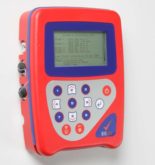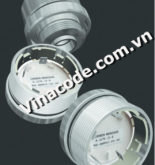The Selvapiana winery in Italy’s Tuscany region is using CellarSafe and Xgard fixed CO2 gas detectors from Crowcon (UK) to protect workers in the winery’s cellars. The units were installed by Parsec S.r.l., a company which works closely with Crowcon in the Italian wine industry.
CO2 is a by-product of the fermentation process and, because it is heavier than air, it can spill out of fermenting tanks and sink to the winery floor, where it forms deadly, invisible pockets. Workers cleaning grape skins out of fermenting tanks are also in danger, as any remaining CO2 can deplete oxygen in the tanks to dangerously low levels. In fact, CO2 is a hazard throughout the winemaking (and brewing) process – right through to packaging and distribution. Long term exposure to as little 0.5% volume CO2 represents a toxic health hazard, while concentrations greater than 10% volume can lead to death. Its effective monitoring is therefore absolutely essential.
At Selvapiana two CellarSafe CO2 detectors and one Xgard CO2 detector are installed in the winery’s cellars. The CellarSafe units provide two levels of protection: firstly, if CO2 concentrations exceed a certain threshold, extractor fans are automatically triggered; secondly, an 82dB alarm is triggered to warn workers to vacate the cellar immediately. The Xgard detector is linked to a Parsec SAEn5000 control unit that constantly displays ambient CO2 levels on a computer screen in the control room.
Commenting on the installation, Parsec’s Leo Forte said, “The owners of Selvapiana take the safety of their workers extremely seriously and wanted the best and most reliable CO2 monitoring systems available. We did not hesitate to recommend Crowcon detectors for this installation – we are specialists in cellar design and we know from experience what does and doesn’t work. Since the installation we and the winery owners have been very satisfied with the performance of the Crowcon detectors.â€
Selvapiana is a typical Tuscan wine farm consisting of the owner’s villa, the cellars and other buildings – now no longer used – such as the oil mill, the granary and the joiner’s workshop. In the Middle Ages, there were two towers at the centre of the estate, which may have been watchtowers or part of a small castle. Today they are incorporated within the buildings added in later periods (particularly during the Renaissance).
Â



